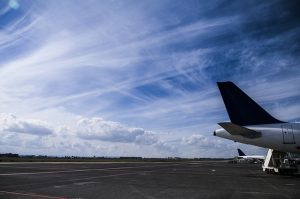
Rudders play an important role in aviation. Located on the tail assembly of airplanes, they act as a primary flight control surface. Pilots can engage the rudders to change the airplane’s yaw. Even if you’re familiar with the general purpose of rudders, though, you might be surprised to learn the following facts about them.
#1) Found on Both Airplanes and Boats
Rudders aren’t exclusive to airplanes; they are commonly found on boats as well. The first recorded uses of these hinge-like control surfaces, in fact, involved boats. The Ancient Egyptians, Chinese and Greeks developed rudders for their respective boats. They would attach rudders to the stern, and with the help of a rope or tiller, they would turn the rudders. The Wright Brothers later used rudders on their early-model airplanes.
#2) Used to Change the Airplane’s Yaw
Contrary to popular belief, rudders aren’t used to change the direction of airplanes. Rather, pilots use rudders to change the airplane’s yaw. On boats, rudders are, in fact, used for directional control purposes, but they have an entirely different purpose on airplanes. Airplanes have rudders so that pilots can control and overcome adverse yaw.
#3) Some Airplanes Have Multiple Rudders
While some airplanes only have a single rudder, others have multiple rudders. Certain military jets, for instance, feature a twin-tail design. They are characterized by two separate, side-by-side tails, each of which has its own rudder. Even many commercial airplanes have two rudders via a “split rudder” tail assembly.
#4) Rudders Can Turn Airplanes
They may be used to change the yaw, but rudders can still turn airplanes. Rudders are vertical hinge-like devices found on the tail assembly. Like with traditional hinges, they can turn. And when a rudder turns, so will the airplane. With that said, pilots use ailerons to turn airplanes. Using only the rudders can technically turn an airplane, but it will take much longer to complete the turn when compared to using the ailerons.
#5) Activating Ailerons and Rudders in Opposite Directions Creates a Sideslip
Pilots may activate both the ailerons and rudders simultaneously. Assuming these surfaces are activated in opposite directions at the same time, this will create a flight maneuver known as a “sideslip.” It’s commonly performed when landing in crosswinds. Crosswinds, of course, can interfere with a pilot’s ability to land the airplane. By performing a sideslip, however, pilots can overcome crosswinds to ensure a safe landing.



